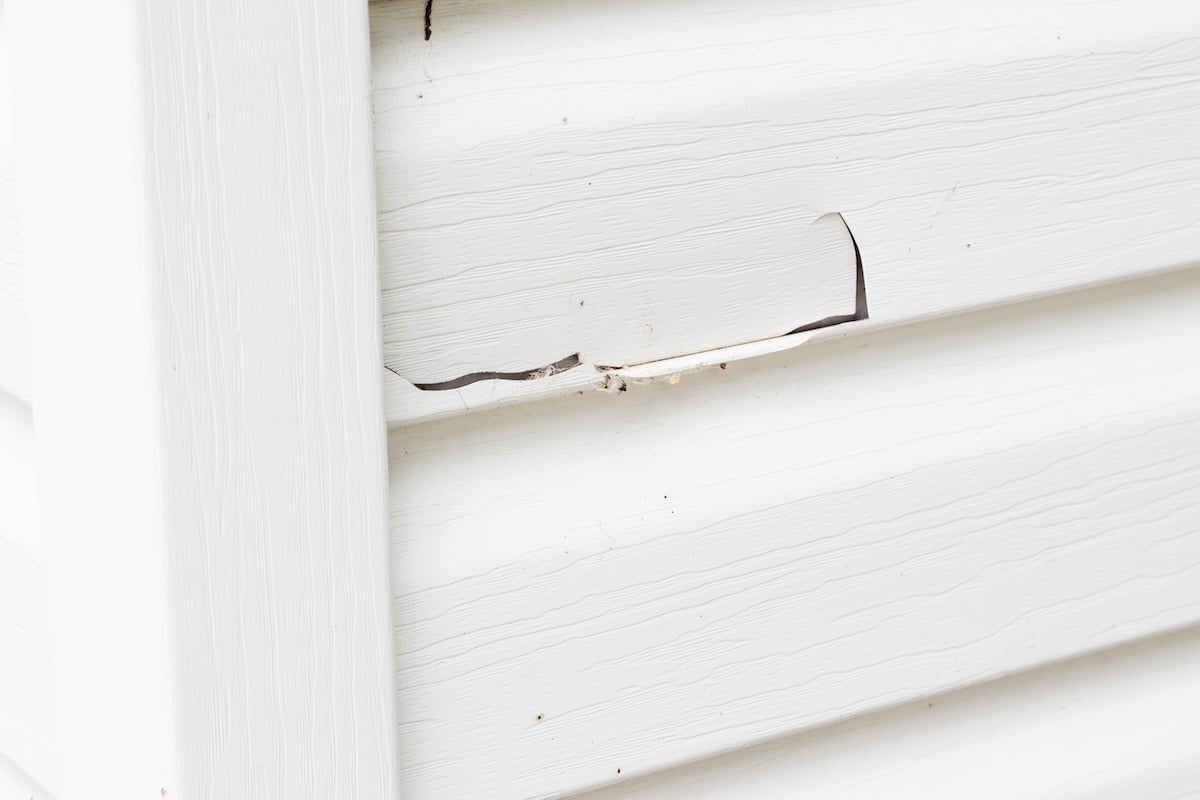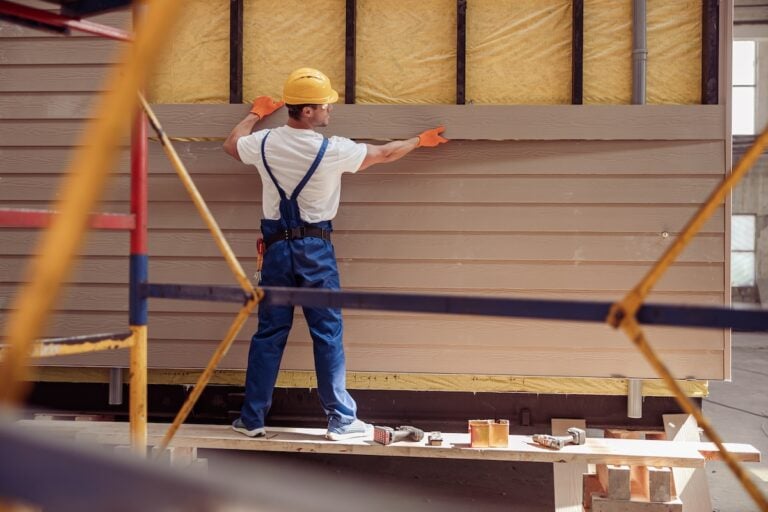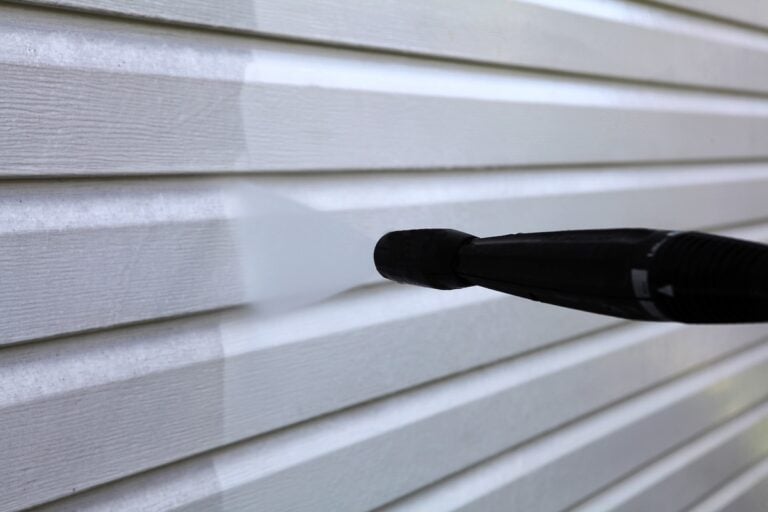Hail damage to siding can go unnoticed until it leads to bigger problems like water intrusion, insulation issues, or even mold. After a strong storm, it’s crucial for homeowners to assess their siding to catch any damage early and avoid costly repairs down the road. Even small dents or cracks can compromise the protective barrier your siding provides.
In this blog, we’ll cover:
- The most common visual signs of hail damage to siding
- Tips for inspecting different siding materials like vinyl and fiber cement
- When to call a professional for inspection and repairs
Let’s walk through how to identify damage before it turns into something more serious.
⛈️ Why Hail Is So Harmful to Siding
The Force of Impact
Hailstones can range in size from small pellets to golf balls, or even larger. The force of these impacts can dent, crack, or puncture siding materials, depending on the storm’s intensity.
Repeated Exposure
It’s not just one storm you have to worry about. Repeated hail exposure weakens siding over time, making it more vulnerable with each new storm.
Material-Specific Risks
Different types of siding handle hail differently:
- Vinyl siding may crack or shatter under pressure
- Aluminum siding often dents
- Fiber cement can chip or splinter
Understanding how your siding material reacts to hail helps you better assess any damage.

✅ 7 Signs of Hail Damaged Siding
Not all damage is obvious at first glance. Here’s what to look for after a hailstorm:
1. Cracks in the Panels
One of the most common signs of hail damage to siding is visible cracking. These cracks typically occur in a spider-web pattern or along panel seams. Even small cracks can expose your home to water damage.
2. Dents and Impressions
Look for round dents or small pockmarks, especially on aluminum or metal siding. These often appear as dimples scattered across the surface.
3. Chips and Gouges
Fiber cement and wood siding may show chips, gouges, or even missing chunks. If you see small areas where the top layer of paint or coating is missing, hail is likely the culprit.
4. Discoloration or Paint Disturbance
On painted surfaces, hail can cause the paint to bubble, flake, or fade unevenly. You might also notice lighter or darker spots where hailstones made contact.
5. Loose or Warped Panels
Hail impacts can dislodge or shift siding panels. If a panel looks misaligned or has lifted edges, inspect further to see if it’s been compromised beneath the surface.
6. Splatter Marks or Debris Trails
When hail hits at an angle, it can kick up dirt or debris, leaving behind visible splatter marks or streaks on the siding. While not technically damage, these are indicators of heavy impact.
7. Damage to Adjacent Structures
Check gutters, downspouts, fencing, or outdoor fixtures for signs of hail damage. If these elements are dented or cracked, your siding likely took a hit too.
🔍 Inspecting Your Siding After a Storm
Knowing what to look for is only half the battle, you also need to inspect your home properly and safely.
Walk the Perimeter
After the storm has passed and it’s safe to go outside:
- Walk slowly around your home
- Take photos of any suspicious areas
- Note the direction the storm came from to focus on the most exposed walls
Use Proper Lighting
Shadows can hide small dents or cracks. Inspect siding during daylight hours or use a flashlight held at an angle to reveal imperfections.
Compare Sides of the House
Hailstorms often impact one side of a home more than others. Comparing siding on all four sides can help you determine where the most damage occurred.

🪵 Material-Specific Damage Signs
Different siding materials react to hail in different ways. Here’s how to assess each:
Vinyl Siding
- Cracks, especially around panel seams
- Breaks that expose the underlayment
- Chipping near the corners of panels
Aluminum Siding
- Soft dents that feel smooth to the touch
- Paint loss or powdery streaks
- Scratches or abrasions from wind-driven hail
Fiber Cement
- Surface flaking or paint chipping
- Small craters on flat surfaces
- Splinters near nail holes or edges
If you’re unsure which material your home uses, check your homeowner documents or consult a local siding expert.
📞 When to Call a Professional
Hail damage to siding isn’t always straightforward. Here’s when it’s best to get expert help.
- After a Severe Storm: If your area experienced high winds and hailstones larger than a quarter, schedule a professional inspection. Roofing and siding contractors are trained to spot damage the average homeowner might miss.
- Before Filing an Insurance Claim: A professional can provide detailed documentation, which helps strengthen your case with the insurance company. They can also advise you on whether the damage justifies a claim.
- For Safety Reasons: Climbing ladders or handling damaged siding can be dangerous. Leave high or hard-to-reach inspections to trained professionals who have the right equipment.

👍 Preventing Future Hail Damage
While you can’t prevent hail, you can make your siding more resilient and protect your investment.
Upgrade to Impact-Resistant Materials
Some siding materials are rated for impact resistance. Ask your contractor about:
- Reinforced vinyl
- Fiber cement with weather-treated coatings
- Steel siding designed to absorb impacts
Maintain Your Current Siding
- Clean siding regularly to spot hidden cracks
- Repaint or seal wood siding to avoid water damage
- Replace cracked or chipped panels immediately
Schedule Annual Inspections
An annual check by a professional ensures your siding is storm-ready and helps catch small issues before they worsen.
💪 Protect Your Home With Help From Boss Exteriors
Catching hail damage to siding early can make the difference between a simple repair and a costly replacement. But recognizing damage isn’t always easy, especially when signs are subtle or hidden.
That’s where Boss Exteriors comes in. Our experienced team of roofing and siding professionals knows exactly what to look for, how to assess the extent of the damage, and how to restore your home quickly and affordably. From storm inspections to insurance support, we’re here to make the process simple and stress-free.
Think your siding may have hail damage? Contact Boss Exteriors today and let us help you protect your home with confidence.





